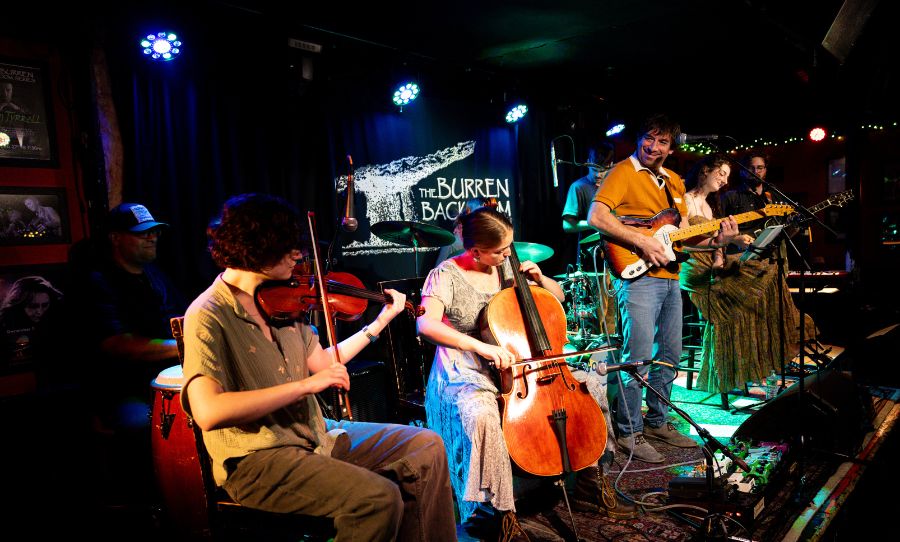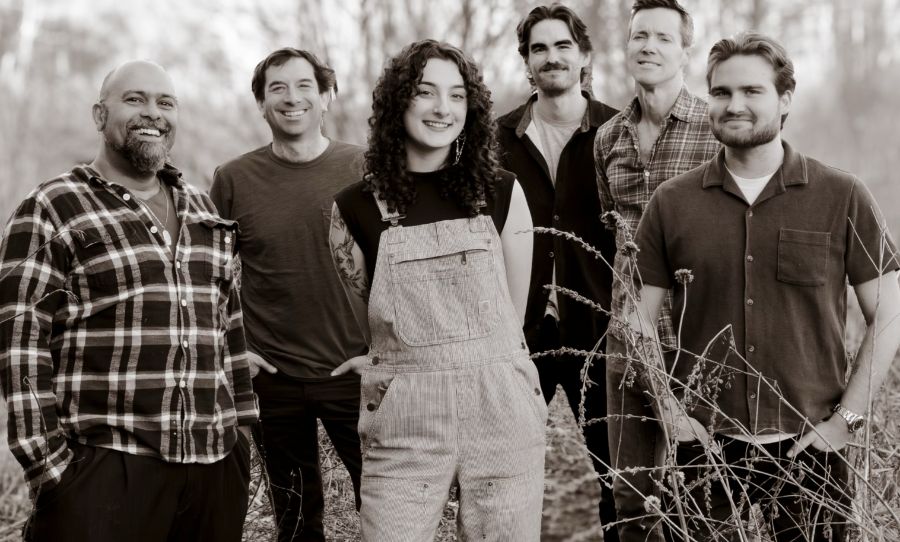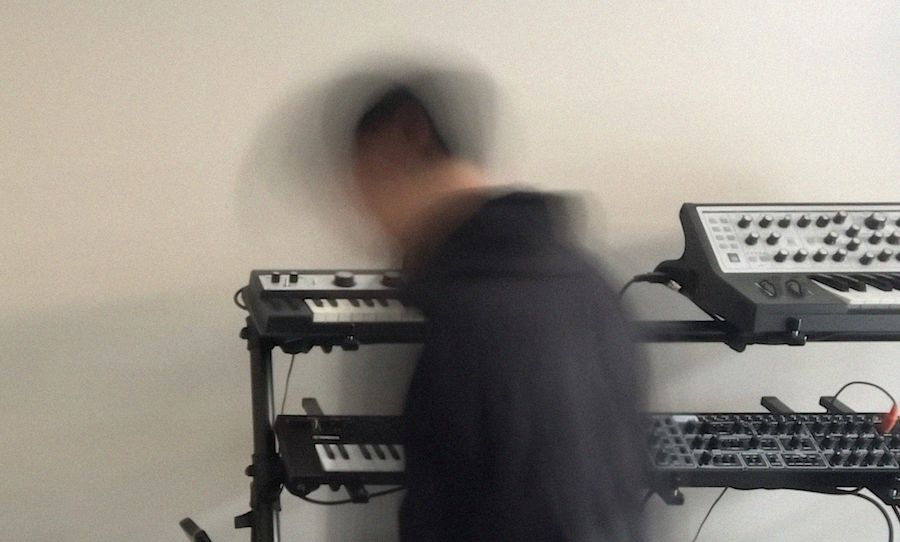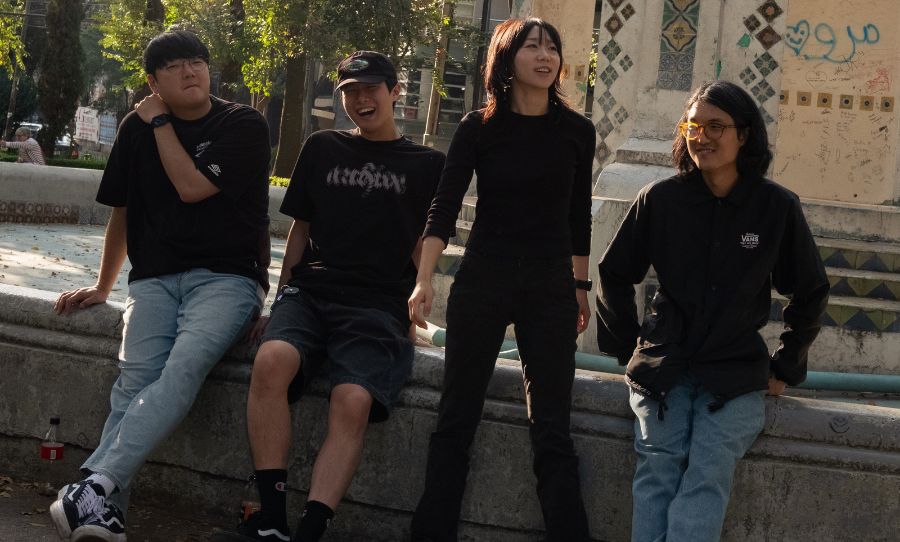Attempting to classify Goodwin within a single genre proves difficult, with their experimental approach deliberately evading categorisation
However, therein lies the true magnetism of this indie-funk experimental fusion collective.
For those not yet acquainted, Goodwin has unveiled their latest album, ‘The Monarch and The Milkweed,’ now available across all streaming platforms.

This fresh offering stands as only their second full-length release since 2023’s ‘The Hunt,’ yet showcases remarkable artistic evolution.
The six-member ensemble has refined their sound into something both transformed and meticulously crafted—a musical identity they’ve developed with evident pride and precision.
What distinguishes Goodwin’s sonic landscape is their expansive instrumental palette, featuring an impressive array of musical tools that extends far beyond conventional boundaries.
‘The Monarch and The Milkweed’ continues their tradition of sonic exploration while demonstrating the band’s growth since their previous work.
And as they continue expanding their instrumental horizons and refining their multifaceted sound, Goodwin remains committed to musical innovation.
So sit back, relax and have a read of our chat with Goodwin below.
HAPPY: What are you up to today?
GOODWIN: I woke up this morning, brewed some coffee and shuffled my teenage daughters off to school. Trust me, this is no small feat!
Now, I am working my way through the new mixes that just landed for our upcoming album while also promoting our vinyl release show this week.
HAPPY: Tell us a little about where you’re from, what makes it so special to you?
GOODWIN: I was raised in Concord, Massachusetts and reside there still with my own family. Growing up soaked in such marked seasons shaped my outlook on things, and continues to inform my creative process.
One of the tracks on our new album, “New England Man”, deals with the psychological impact of living with distinct seasonal markers, and the potential shift in philosophy that might occur with climate change.
As well, Concord has been home to many creative writers and artists for centuries, and it is thrilling to be part of that lineage. I can hear the whispers of Fuller, Emerson, and Thoreau as I traverse the same woodlands in which they too once sauntered.
I feel blessed to be so deeply rooted in this place, and many of our songs explore these kinds of relationships.
HAPPY: What’s three tracks you currently have on repeat?
GOODWIN: “Worship” – John Batiste
“Blood Orange” – S Carey, John Raymond
“Buffalo Ghost” – Edie Brickell and The New Bohemians
HAPPY: Your sound defies easy categorization, blending elements of indie funk, reggae folk, and art rock. How did this eclectic style develop, and do you feel any pressure to fit into a specific genre?
GOODWIN: When asked: what kind of music do you like, I always respond with the same answer: “So long as it is done well, I love it all!” And while hard rock and heavy metal is not necessarily the first thing I put on my turntable, I so admire, enjoy and appreciate Rage Against the Machine and Judas Priest.
Early on, a friend told me that our lack of easily identifiable genre could either work for us or against us. Over time, I think both things have been true. Either way, we are going to continue to make the music we love making, whether or not it readily fits into a pre-determined category.
If we start shifting our sound to fit into a specific mold, we might get on more playlists but we would quickly lose our authenticity and ultimately would cease being interesting.
I think when I first heard many of the bands that I truly love, I said something to the effect of: “What is this?!” I like the idea that listeners might have a similar thought when they listen to our music, because that means it is new, different. No need to do what has already been done.
HAPPY: The band seems to thrive on the balance between raw authenticity and musical sophistication. How do you maintain this equilibrium when writing and arranging your songs?
GOODWIN: I am blessed to work with such brilliant musicians. As such, I always feel confident bringing a raw arrangement into the room, knowing that the songs will grow exponentially by leaving space for everyone to bring their own mark.
Everyone involved in this project is here to serve the music more than their own ego. And while every musician on this album is capable of wowing the listener at any given moment, they choose to do what is right by the song, which often means holding back most of the time.
HAPPY: You’ve collaborated with an impressive array of guest musicians, from Ben Lester of Bon Iver to Peter Maclean of Maceo Parker. How have these collaborators influenced your creative process?
GOODWIN: Since I first started playing in bands at the age of 13, I knew that the best way to develop as a musician is to put myself in the company of players who are a bit out of my reach. For me, this is always where the most learning has occurred.
So it was with Peter Maclean in middle school when I watched him play Led Zeppelin’s “Moby Dick” beat for beat in his basement before jamming with him for the first time, so it was when I sent “Tetons” from the first Goodwin record to Ben Lester for him to track pedal steel.
HAPPY: With six core members and frequent guest musicians, how does the band approach songwriting and arrangement? Is there a specific process for incorporating new voices and instruments?
GOODWIN: Every song has its own story. Sometimes the groove sparks the lyrics, sometimes the words compel a certain feel. Often it is an iterative process where a shift to even a single lyric requires a different chord voicing to support it.
Though I create the framework for all of these songs, I bring them to the band in a state of innocence. That is, the songs are open and vulnerable to the world around them. All of the other musicians involved in this project make a substantial mark on the final product.
Everyone involved on our records ends up getting an arrangement credit because, at least in my mind, there is no other way to do this.
HAPPY: The inclusion of instruments like pedal steel, fiddle, and accordion suggests a willingness to experiment with traditional sounds in new contexts. What drives these instrumental choices in your music?
GOODWIN: I am fascinated by the countless instruments that pervade our sonic landscape and am always excited to bring in new sounds to serve the music. In addition, the instrumentation on each album has been driven by the people I am blessed to meet.
When I encounter a kind and creative person who can really play, I often seek to bring them into the fold. I promise you that if I meet an incredible tuba player in the next month or so, there is a very good chance she will end up on the next album.
HAPPY: The band features dual vocalists in Emily Campagna and Michael E Goodwin. How do you approach vocal arrangements and the interplay between your voices?
GOODWIN: Singing with Emily is more than a joy, it is an honor. She joined the band bit by bit – first sitting in for a tune or two, then for a set, then boom: there she was! “Lean” was the first song I wrote once she was a full fledged member of the band, and it was a thrill to leave so much space in the vocal arrangement for her to bring her own mark to the song.
And that she did! Sitting with her in the studio to write that song remains one of my favorite musical moments of all time, and as such one of my favorite songs to play live. Emily and I get each other in some kind of existential, ethereal way and I hope we have at least another dozen albums to make together.

HAPPY: What’s the most unexpected or surprising direction a song has taken once you started experimenting with it in the studio or on stage with guest musicians?
GOODWIN: Louis Pasteur once said: “chance favors the prepared mind.” I could not agree more. We enter the studio well rehearsed with arrangements ready to go – and because of this we are all open to new ideas that often serve to really push the songs where they are asking to go.
A perfectly placed snare hit from Matt Lydon, an epic lick from Jason Fletcher, a shocking polyrhythm from Yahuba Garcia, a lucid bow from Celia Sieckert, a wild run from Anne Preis, an astonishing bass fill from Ethan Stewart, a sublime interval from Emily Campagna, an enchanting passage from Danny James, and Chris Sartori…on the vibraphone?!
I think this kind of on the spot creation also speaks to the trust we have in one another and in the process. And of course, we are blessed to work with such brilliant engineers/producers Jonathan Wyman and Benny Grotto – who also create a climate in which we are able to do our best work.
HAPPY: What’s on the horizon for the band this year?
GOODWIN: We are already in the midst of recording our next album. And though I do not want to give away too much, let’s just say it will be quite different, with – of course – the requisite Goodwin stamp. Our hope is to hit the road following this third release and start sharing our music with larger audiences across the country.
HAPPY: And finally, what makes you Happy?
GOODWIN: I love seeing anyone in any setting being proud of what they are doing, and feeling good about themselves. In my experience, this usually means they are also doing good for others.
The lydian mode also gets me every single time, without fail.


